archive 2019 - 2009
2019
Art&Friends 2019 - Interview with Regula Rüegg
Regula Rüegg is the curator of Deutsches Haus at NYU’s summer exhibition, “Art & Friends.” The exhibition features works by Therese Balduzzi, Jon Dee, Doug Eisenstark, Alexander Hahn, Kay Hines, Bruno Jakob, Silvelin von Scanzoni, Hans Witschi, and Regula Rüegg. The exhibition will be on view through September 14, 2019. In addition to her artistic work, Regula Rüegg is an adjunct instructor of German for Deutsches Haus at NYU’s language program.
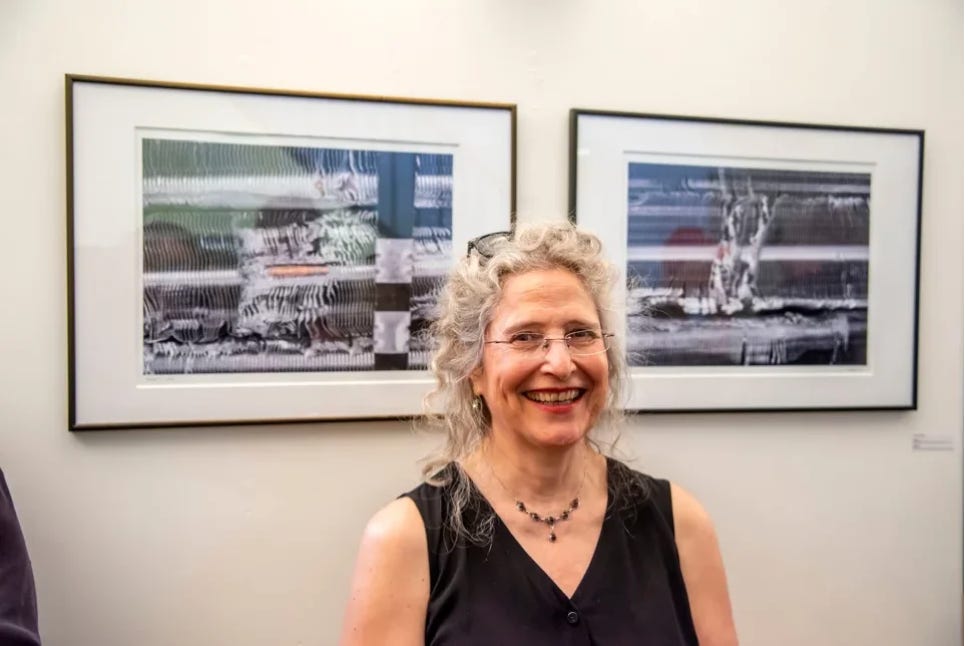
© Stefan Falke
For many years you’ve curated the annual summer show “Art & Friends” at Deutsches Haus at NYU. Which edition of the exhibition is this for you?
This is the 10th edition of the summer show that I am participating in, but there were two editions before I started teaching at DH.
I first participated in 2009. At that point, the team put the show on together as a group. The following year Katrin Roos and I took over as curators. In 2011, we changed the name to“Art&Friends” because some of the teachers left Deutsches Haus, others joined , and we also wanted to have more variation in the art works. The name changed allowed us to be more flexible with the artists we could support. From 2016 to 2018, I got support from Maila Akerberg, and this year I curated the show alone.
Do you focus on a specific theme or pattern in curating the show and selecting the included images and artists? What inspired you for this edition of “Art & Friends?”
In the beginning we just brought our works and arranged them according to the space. Together with Katrin, I started to look for other interesting artists. It was always a mix of art we liked and people we liked. In 2017 and 2018, we had a theme because of the collaboration with the Chelsea Music Festival, which turned out to be a great combination with our previous approach.
I enjoyed the studio visits immensely, even if I had to take a 4 hour bus ride. Going to studios and looking at art work and talking to artists got my brain going. The previous experience helped me find the “guiding thread” of this year’s curation faster than all the other years.
This year I wanted to show works mainly from some of my friends, but as the work came together, it became clear that this show was going to focus on portraiture – portraits of people, of trees, of objects, of cities, of landscapes and cityscapes.
How do each of the artists’ works compliment each other? Does one work inform another? Is there a dialogue to be had between some of these pieces? If not, then is each artist’s work meant to be viewed as separate mini-exhibitions in celebration of each artist’s unique style, expression, and accomplishments?
I chose the artworks in part because they seemed to naturally be “talking” to each other, in part because they were portraits of people, landscapes or cityscapes. I like to arrange the works in a (sometimes) loose narrative. Doug Eisenstark’s paintings of himself are about the self and the forces that are constantly sculpting us. Alexander Hahn shows an entire narrative about a real person in a real scene but then turns it into a fictitious scene. It is up to the viewer to decipher the flow of pictures – who is that person? What is happening?
Painted portraits are presented through Silvelin von Scanzoni with “Alice,” a very recent work, the model of which was present for the opening- how wonderful!- and a portrait of her mother, very ethereal, almost otherworldly. Those then lead to the “Invisible paintings” by Bruno Jakob. Here we enter a special sphere, the energy emanating from the painting process still lingering. From there it is a short step to Hans Witschi’s “friendly ghosts,” happily talking to the visitor of other worlds, or to the images coming out of the brush. The feelings they evoke then carry the viewer over to the portraits of ethereally lit cherry trees by Jon Dee.
But yes, every group can be seen as a little cosmos in itself, like the narrative of Alexander Hahn’s“RR enters a Gallery and .. a likeness of herself”, where facts meet fiction, or Kay Hines’ Video about Rome.
What stands out to you in this edition of “Art & Friends?” Do you have any pieces (either yours or your colleagues’) that you would like to contextualize or discuss further?
I have no favorites, each artist is unique in his or her work. About context: on the ground floor, Kay Hines’ video shows a very intense and multilayered portrait to the city of Rome, of art history, all in combination with personal impressions. Therese Balduzzi’s photos are very different from the video, but they also tell a story about a cityscape. We get a wide range of city impressions in this exhibit.
Could you explain why photography is your preferred medium? What do you want to express with your photographs? What do you feel when you look at them in the context of your curation?
Photography works for me – I love details, special atmospheres, signs of the past or the passing of time. I am not creating new visions in photoshop. I am more intrigued by forgotten and overlooked things i.e. metal scraps or the details of a damaged AC.They are part of this metropolitan lifestyle of using things and then throwing them away. There is beauty found in everyday objects, in the normal, the hidden, or the faded things like old, barely visible ads painted on walls.
This year’s turnout was truly incredible. What were some of the feelings you had during the opening?
I was overwhelmed and incredibly happy, especially for all the artists. It is so rewarding when an exhibition draws an audience! It was also very touching to see a lot of friends coming together for each other, especially since it was my last exhibition! Mostly, I felt very grateful for getting this opportunity from Deutsches Haus, putting up shows without conditions. I learned a lot in these past 10 years. I didn’t know in the beginning that curating was in the stars for me ;) – and I really love it! Thanks to Deutsches Haus, I discovered a new side to my art as well as a new connection to art in general.
Would you like to talk about any upcoming projects (either yours or your colleague’s)?
All I know is that I will be continuing with photography. For now, I don’t have a specific project. I have to stumble upon something because I am not good with project work – I feel too confined, boxed in. I will go out, walk around the city, take photos of everything that catches my eye, and then see what happens!
https://deutscheshausnyu.tumblr.com/post/186194089391/interview-with-regula-rüegg
2018
Interview with Regula Rüegg
Regula Rüegg is the curator of Deutsches Haus at NYU’s summer exhibition, “Variation – Transformation – Adoration.” The exhibition features works by Terry Berkowitz, Claire Gilliam, Jeannine Guidi, Kay Hines, Silvelin von Scanzoni, Ursula Scherrer, Sokhi Wagner, and Regula Rüegg. The exhibition will be on view until September 5, 2018. In addition to her artistic work, Regula Rüegg is an adjunct instructor of German in Deutsches Haus at NYU’s language program.
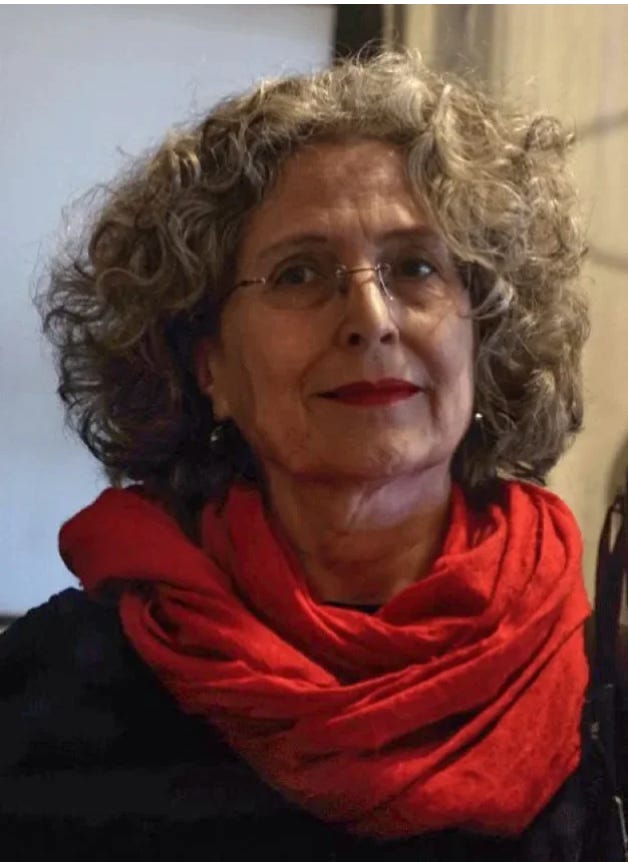
© Regula Rüegg
You’ve been curating exhibitions at Deutsches Haus at NYU since 2009. In this exhibition have you included any new artists or have all of the artists been featured in previous Deutsches Haus at NYU exhibitions? If you did include new artists, did you seek them out based on their specific works or did you include them because of your knowledge of them as artists?
The first exhibition in 2009 was conceived as a “Teacher & Staff Summer Show” and since then Silvelin von Scanzoni and I have taken part. Together with Katrin Roos I curated the show in 2010, and we were looking for artist friends of ours who could make contributions to our exhibition. Until 2016 she contributed her own works to the exhibition as well. In the last two years, Maila Akerberg joined us for the process of looking for artists. Some of them, like Kay Hines and Alexander Hahn, have taken part in the annual exhibitions several times. I always make sure that the artworks go well together, complement each other, or even contrast one another. I asked friends of mine to take part in the exhibition as well as artists that I don’t know very well but whose art I’m interested in.
The exhibition contains works of various mediums such as paint, pencil, video, and photography. How do you think these different mediums lend themselves to the theme of the exhibition?
Different mediums make an exhibition richer, especially with such a broad theme this year (as was the case last year, by the way). I love the interaction between video, photo, paintings, and drawings. These different mediums often lead to surprising combinations of color and form. This year, for example, there is a correspondence of the color blue in “The Blue Woman” by Claire Gilliam and “Variations in Blue” by Silvelin von Scanzoni, which hang across from each other. The shapes and ideas that interact with each other in Jeannine Guidi’s photos and Kay Hines’s video are revisited in Sokhi Wagner’s photos. Additionally, the subject is of the body is visualized in various works employing different photographic techniques. Claire Gilliam does so in an abstract way, while Ursula Scherrer does so in a more realistic fashion that is nonetheless alienated by the text. The videos are dynamic and bring portraits to life. They connect forms and figures in a dreamlike way while the photos show snapshots of a certain moment within the temporal continuum.
The exhibition portrays the variation, transformation, and adoration of color, people, and place. How do you feel these different subjects relate to each other and tell a story when viewing the exhibition?
Variation is something that is generally part of the process of creation in art. A work of art emerges out of variation, often after years of struggling to find the “right” form. All of the presented pieces show aspects of this process, such as “The Blue Woman” by Claire Gilliam. To go from photos of bodies to these blue pictures is, first, a variation of the underlying photographs, then a transformation through the stencils and the special printing technique. Pure transformation is also visible in the two photos “Yes, but does it fly?,” in which Terry Berkowitz shows her transformation into a ‘feather-human’ or ‘human-bird.’
All the exhibited works tell stories. In Kay Hines’s video, scenes of Lisbon, buildings, animals, pictures, and works by Hieronymus Bosch join together. Through combination and animation, stories begin to develop, hence the title, “Thanksgiving in Lisbon (or A Tale of the Sex Balloon and the Cephalopod).” Jeannine Guidi’s pictures show forms and colors that tell a story in a similar way: the leaf that evolves into a butterfly wing or the ear that is attached to a tree. In both, we see the human being connected with nature. Sokhi Wagner takes snapshots from films and lets these interact with each other. Out of this variation arises a transformation brought about through the mysterious hand. Ursula Scherrer’s body pictures, showing segments and variations of her body, are also transformations that emerge out of the text laid over them. This combination in addition to the use of thin Japanese paper invite adoration for the wonder of the human body. Similarly, the portraits of the women from Western Sahara, with their impressive glances, charisma, and dignity, express an admiration for these women.
Some pieces deal specifically with the passage of time, such as your piece entitled "Morning Views.” How do you feel time affects variation, transformation, and adoration?
Photography is a way of capturing changes over time. Not the transformation itself, but the outcome. “Morning Views” gives new meaning to mundane and incidental things that you wouldn’t normally consciously perceive: the weather, light, and colors that change over time. The view changes as well, not only through the different segments, but also because of new buildings, etc. Here, adoration is the “work’’ of the viewer, who admires the endless variation of morning moods and, with that, nature in general. Usually when we think about time, we think about a linear continuum that constantly shifts between future, present, and past. Maybe we are situated in a cyclical, rather than linear, temporal continuum.
Nearly all of the works are part of a series of pieces. In the one work that is not part of a series, your piece entitled “Red,” the movement captured still suggests transformation of some kind. Were you considering the concepts of variation and transformation when creating the piece?
This pictures has its origins in the work I was doing on “Morning Views’’ and shows a detail of the curtain which can be seen in all the other photos. What appears, depending on the weather conditions, to be orange or red is perceived at this level of detail as an abstraction of different hues.
We know that photography is your medium of choice. When you started making art, did you explore using other mediums or did you begin with photography?
I started out with sculpture, photography only came later. The (physical) effort with stone matched my wish to express and to create with my own hands. It’s unique to experience what can come out of stone and to find the appropriate way of doing this. When I first came to New York I took classes in stone carving, which unfortunately are no longer offered, with Barbara Segal at the School of Visual Arts. Simultaneously, I started to explore this foreign city which got me more and more into photography. It helped me to see things in a different way, to look more closely, to find patterns, and to find details in big things (which there are many of in New York). I love everything with a serial nature—patterns and repetitions—but also the small details, the inconspicuous, like the daily view out of your window, the small moss which grows on a wall covered in graffiti, the faded billboards for businesses and bars that no longer exist.
https://deutscheshausnyu.tumblr.com/page/2
2017
Measuring Time at Deutsches Haus
Liz Daly · August 11, 2017 ·
Measuring Time, a charming exhibit at Deutsches Haus at NYU began as part of the Chelsea Music Festival in June.The show of 20 works by six artists ranges across woodcuts, photographs, drawings and mixed media, exploring themes of waiting, rhythm, and decay.
Regula Rūeg’s work focuses on crumbling walls, forgotten signs, and lost wall advertisements, which allow us to see how the built environment changes over time.
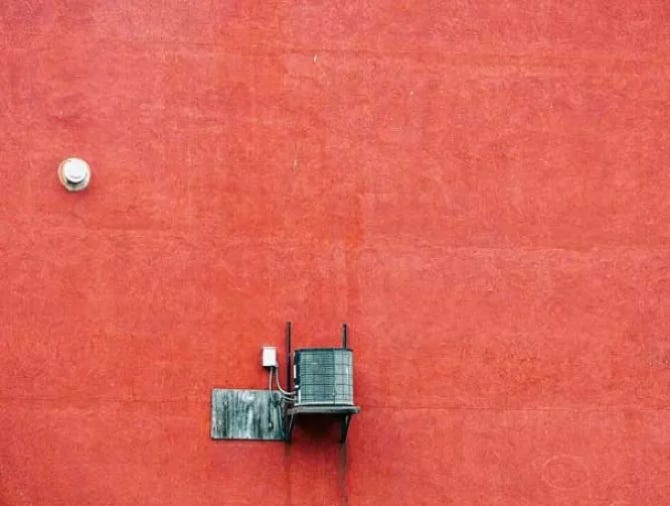
Red Wall Owego, 2017, Regula Rüegg
Bill Beirne’s work centers on public space and communication.He’s known for his video installations and public performances, one of which is documented in the above photograph.
There’s more to see by these artists and the other four in the show, which is up until August 26th.Deutsches Haus at NYU is at 42 Washington Mews, and is open Mon-Fri 10:00am to 8:30pm, Saturdays 10:00am to 4:00pm.They also offer German language lessons (I’ve studied there) as well as public talks, readings and film screenings.
Posted in Art · Tagged free or low cost, Germany
2009
Making it in New York
Immigrant Artists at the 60 Wall Street Gallery
The Brazilian artist Priscila de Carvalho deals with urban landscapes in a globalized world. She is inspired by rampantly growing shantytowns and favelas and makes hybrid collages in which abstract passages or pictures of streets and architecture overlay photos she has taken herself or appropriated. On view is her large-scale collage 482 Approaching Mermaid Parade (2008), which focuses on the current conflict around Coney Island. Between stylized silhouettes of roller coaster and carousel, passers-by encounter imaginatively costumed people taking part in the annual Mermaid Parade, which is held every year on Coney Island to celebrate the beginning of summer. However, the artist has a military helicopter circle above the merry scene, a symbol of the threat posed by property speculation to the old-established amusement park.
Twenty artists from eleven nations. “Making It,” the current exhibition at Deutsche Bank’s 60 Wall Street Gallery, features works by participants in the 2008 NYFA Mentoring Program for Immigrant Artists, demonstrating that New York continues to have an immense attraction for the international art community.
“If I can make it there, I’ll make it anywhere.” What applied to Frank Sinatra still applies today for many artists who year after year try to get a foothold in New York. It is a tall order. “For an artist, New York is a fantastic opportunity with its high energy and cultural variety. However at the same time it is also intimidating for a new comer. It is a hard trip to go through If someone is not already integrated through a school or close friends,” explains Anna Pasztor. Or if they have a mentor. Pasztor, a Hungarian multi-media artist, trained dancer and choreographer, has benefited from an innovative program offered by the New York Foundation for the Arts (NYFA). As mentors, NYFA Fellowship winners help non-American artist mentees to get connected in the New York art scene. And they support these practicing artists in concrete ways. For example, they help them write applications for grants in English, prepare their portfolios or statements, and give tips about where to procure materials for their work. Together with NYFA, Deutsche Bank Americas Foundation piloted the Mentoring Program for Immigrant Artists and funded it from the very beginning.
For the exhibition, Making It, curator Liz Christensen from Deutsche Bank New York’s art department invited all of last year’s participants from the visual arts category. The works on view by artists from eleven countries demonstrate the enormous vitality and range of talent living within the five boroughs of New York, a city which continues to beckon foreign born artists and is continually being enriched by their diverse influences.
Country Road, 2004, Regula Rüegg
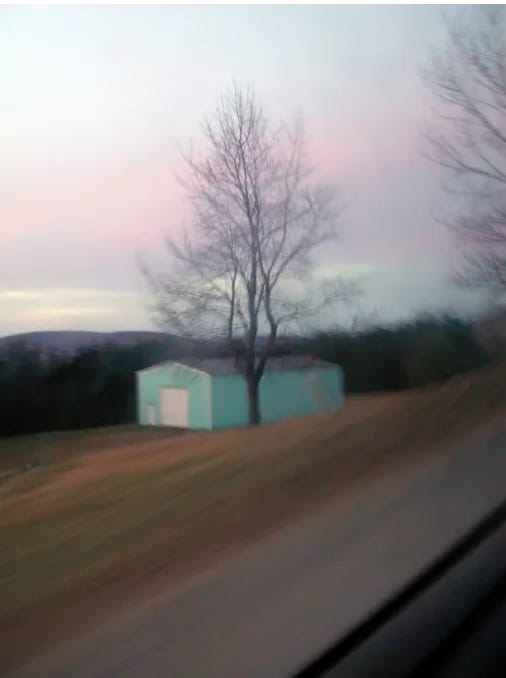
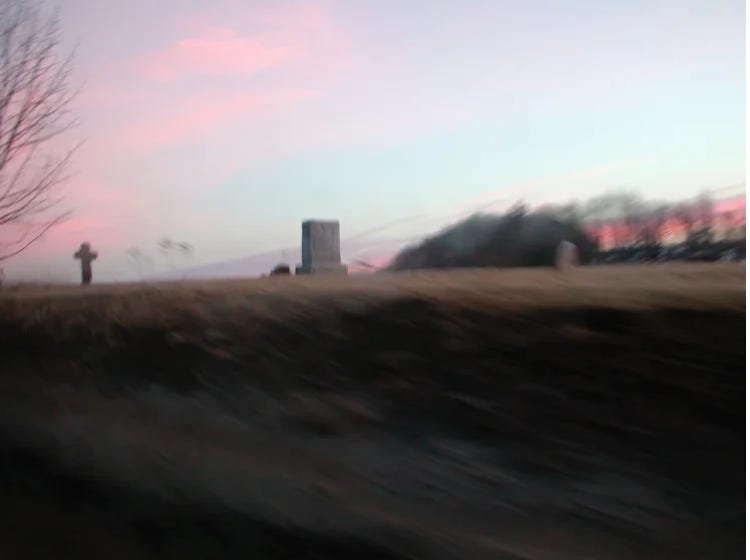
Graveyard, 2004, Regula Rüegg
Urban landscapes and architectural structures also feature prominently in the work of Carvalho’s mentor Carleen Sheehan. A look at Bungalow (2006) shows that there are not only similarities between the subject matter of the two artists’ work. Carvalho and Sheehan are also united by their method of sampling diverse pictorial material.
The work of Regula Ruegg also conveys transcultural experiences. The Swiss artist takes photographs from moving cars, and the result is poetic, mysterious impressions of a landscape in movement. These snapshots capture a state of “being in between,” of being between, as Ruegg says, two worlds, cultures, and lifestyles. “References to displacement and physical disruption are frequently present in the work of the expatriated artists,” explains curator Liz Christensen. While Yoon Jeong Han longingly adorns pizza boxes with pictures of his favorite Korean fruit, Lishan Chang from Taiwan covers notes, directions and bills of lading he saved from his day job as a professional mover of goods and furniture with abstract drawings reminiscent of Chinese calligraphy. Co-existence (2007), a video made by the Dominican artist Hatuey Ramos-Fermin, shows a strange phenomenon brought about by globalization and migration: Since 2000, a Latin American Pentecostal church and a table tennis club have shared a room. While white ping pong balls fly back and forth there during the week, ecstatic masses take place there on weekends. The video conveys an at once absurd and hopeful vision that completely different cultures can coexist peacefully.
Common approaches can also be found in the positions of the Japanese Hanae Sasaoka and her mentor Eleanor White. The work of both artists is based on patterns and ornaments. White uses a razorblade to remove pictures on playing cards: All that remains of the king of diamonds or queen or hearts are geometric patterns. She combines the cards to create grids or mandala-like structures, and suddenly the industrial produced cards recall folk art or African materials. In Hanae Sasaoka’s paintings and fragile wall works, which are influenced by traditional Japanese aesthetics, shimmering beetles, moths, or flies form into clusters or “urban groups” so that, according to the artist, they can cope better in the big city. “The imaginary world I create is inspired by and a reflection of my time in NY. I’ve come to be influenced by the power from its diversity and mixture of people.”
Making It
Selections from the 2008 NYFA Mentorship Program for Immigrant Artists
60 Wall Street Gallery, New York
April 2 – July 31, 2009
© 2021Regula Rüegg | made withsparkle.com
© 2023 Regula Rüegg | made with sparkle.com